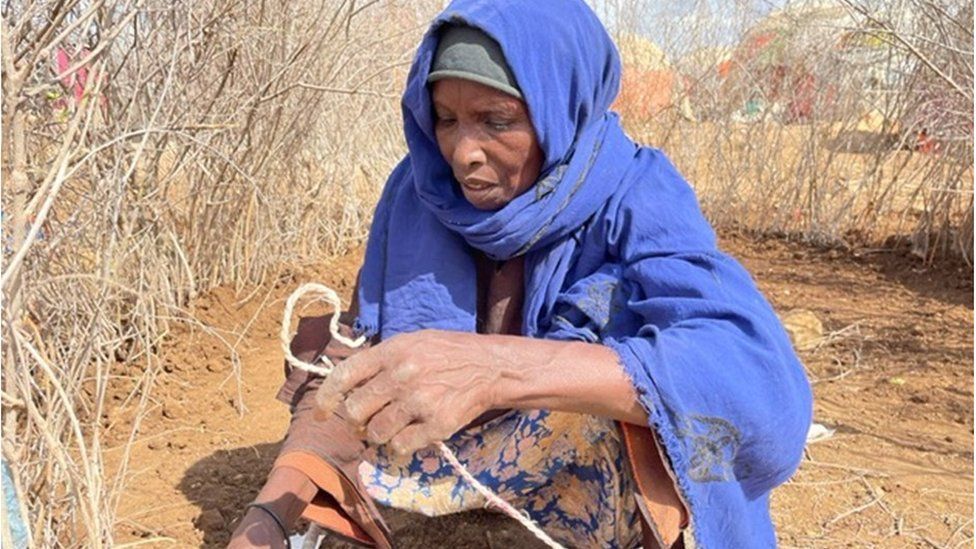Young children are dying in growing numbers in Somalia amid the worst drought to hit the country in 40 years. Government officials say that an even greater catastrophe could sweep the country within days or weeks unless more help arrives.

The tears tumbled down 11-year-old Dahir’s hunger-hollowed cheeks.
“I just want to survive this,” he said quietly.
Seated beside the family’s makeshift tent, on the dusty plain outside the city of Baidoa, his weary mother, Fatuma Omar, told him not to cry.
“Your tears will not bring your brother back. Everything will be fine,” she said.
Fatuma’s second son, 10-year-old Salat, died of starvation two weeks ago, shortly after the family reached Baidoa from their village, three days’ walk away. His body is buried in the rocky earth a few metres from their new home – the grave already covered in litter and increasingly hard to spot as new arrivals set up camp around them.
“I cannot grieve for my son. There is no time. I need to find work and food to keep the others alive,” Fatuma said, cradling her youngest daughter, nine-month-old Bille, and turning to look at six-year-old Mariam as she gave a rasping cough.
On the other side of the dirt road that loops to the south-east, towards the coast and Somalia’s capital, Mogadishu, other displaced families told more grim stories of long treks across a drought-parched landscape in search of food.
‘No strength to bury my daughter’
A new survey has shown that almost two-thirds of young children and pregnant women in the camps are suffering from acute malnutrition, which, along with a high death rate, could indicate that a localised declaration of famine is already overdue.
“I saw my daughter [three-year-old Farhir] die before me and I could do nothing,” said Fatuma, who had walked for at least 15 days with her nine children from a village called Buulo Ciir to reach Baidoa.
“I had been carrying her for 10 days. We had to leave her by the side of the road. We had no strength to bury her. We could hear the hyenas closing in,” she continued.

“I’ve brought nothing with me. There is nothing left at home. The cattle are dead. The fields are dry,” said Habiba Mohamud, 50, clutching a piece of twine in one hand, and acknowledging that she will never return to her village.
A succession of droughts, turbo-charged by climate change, is now threatening to end a pastoral way of life that has endured for centuries across the Horn of Africa.
Like other new arrivals, Habiba was busy erecting a tent for her family from branches, twigs, and scavenged scraps of cardboard and plastic sheeting, hoping to finish it before the chill of night. Only after that could she turn to finding food and medical help for some of her five children.
On the admissions ward in the city’s main hospital, Dr Abdullahi Yussuf moved between beds, checking on his tiny, emaciated patients. Most were children between two months and three years old.
All were severely malnourished. Some had pneumonia and many were battling a new outbreak of measles too.
Few infants had the strength to cry. Several had badly damaged skin, broken by the swelling that sometimes accompanies the most extreme cases of hunger.
“So many die before they even reach a hospital,” said Dr Abdullahi, watching his team struggling to connect an intravenous tube to the arm of a moaning two-year-old.
